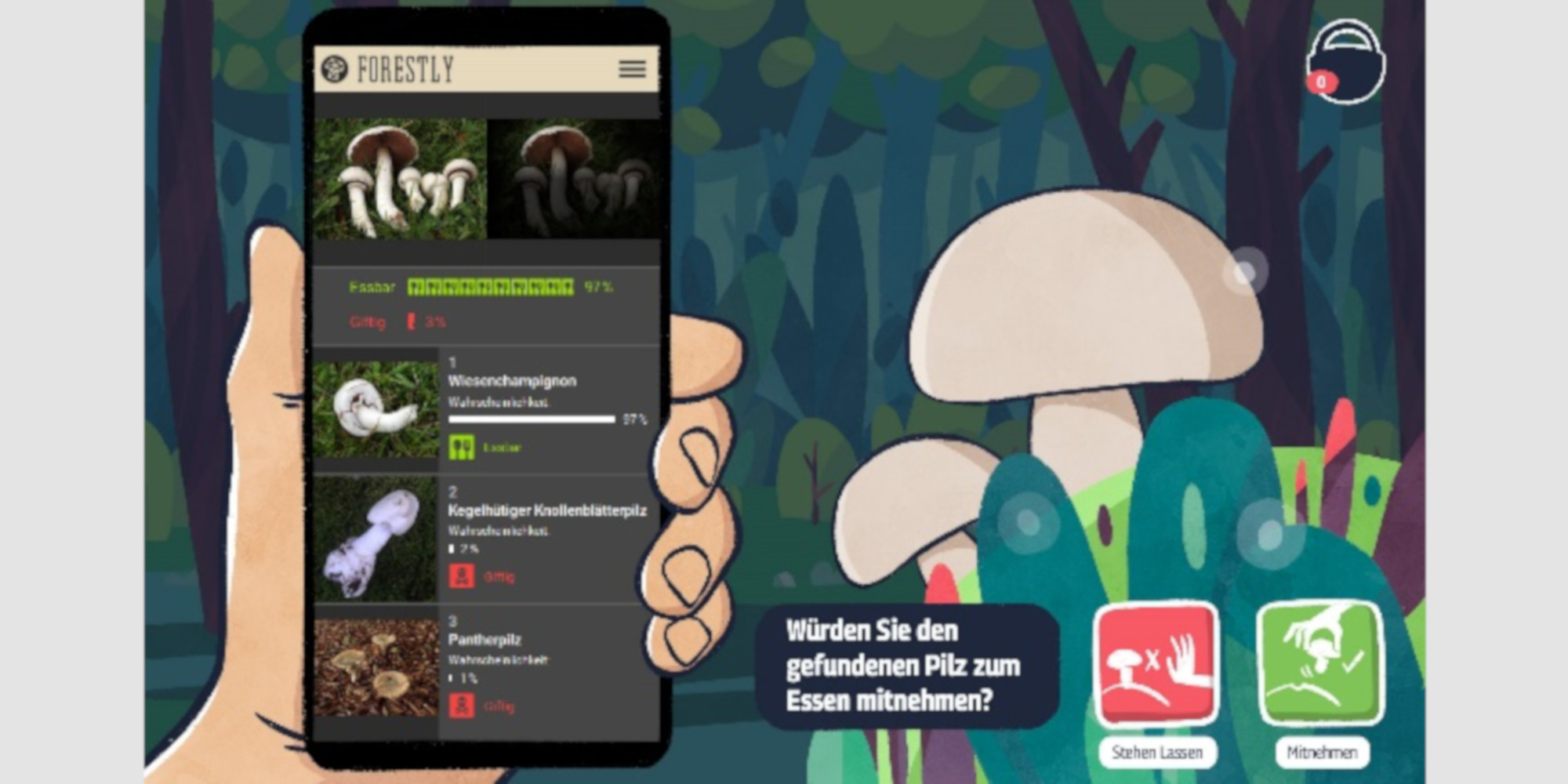AI Forest is an indoor woodland and an interactive game area with lots of mushrooms to discover. Your task as a player is to find ten physical mushroom objects and scan them with the help of a tablet. Your digital basket has to be filled with as many different types of mushrooms as possible. But watch out! Inedible or even poisonous mushrooms should not end up in the basket, of course.
An artificially intelligent mushroom classification app, which was previously trained on a large number of photos of forest mushrooms, is ready to support the players. The purpose of the app is to identify different mushroom types and give an indication as to whether they are edible. But how well does the app explain how it arrived at its conclusion? After all, it is the player alone who decides whether to collect a found mushroom or to leave it in the forest.
Besides its playful character, AI Forest serves as an innovative research environment to investigate questions about decision-making in teamwork with AI and about explanatory strategies of machine learning systems. A key challenge of Artificial Intelligence is that many systems are still not able to “explain” their decision-making in a way that is understandable for humans. Findings from game runs in the AI Forest can contribute to our understanding of which explanations are understandable to which target groups, and how insight into algorithmic decision-making relates to user acceptance and trust.
The idea for the AI Forest emerged from the research project HOXAI – Hands-on Explainable AI, in which the LIT Robopsychology Lab and the Visual Data Science Lab at JKU Linz collaborate as project partners.
Credits
Project Lead: Martina Mara, Nives Meloni
Artistic Concept: Birke van Maartens
Stage Building: Leonie Haasler, Gabriel Vitel
App Development & Game Design: JKU Visual Data Science Lab (Moritz Heckmann, Andreas Hinterreiter, Christina Humer, Marc Streit)
Research Design: Benedikt Leichtmann
Special Thanks to: Mykologische Arbeitsgemeinschaft am Biologiezentrum Linz (Otto Stoik & Team)
Funded by: State of Upper Austria and the Austrian Federal Ministry of Education, Science and Research via the LIT – Linz Institute of Technology




